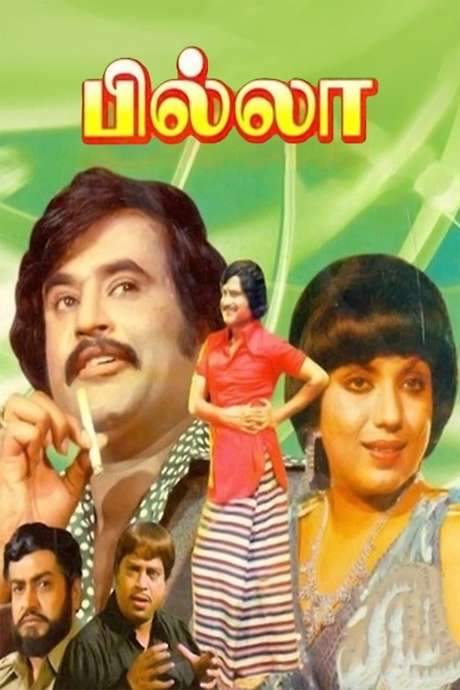
Bandit Queen
Year: 1994
Runtime: 119 mins
Language: Hindi
Revenge becomes her answer. Born into a lower‑caste family in a patriarchal rural village, Phoolan Devi is married off at eleven and endures repeated rape and brutal abuse. She later escapes that oppression, becoming the feared outlaw known as the Bandit Queen—a ruthless, Robin‑hood‑like figure who exacts vengeance on her oppressors. The biographical film presents a vivid portrait of a determined woman while delivering a stark critique of the society that forged her.
Warning: spoilers below!
Haven’t seen Bandit Queen yet? This summary contains major spoilers. Bookmark the page, watch the movie, and come back for the full breakdown. If you're ready, scroll on and relive the story!
Bandit Queen (1994) – Full Plot Summary & Ending Explained
Read the complete plot breakdown of Bandit Queen (1994), including all key story events, major twists, and the ending explained in detail. Discover what really happened—and what it all means.
Set in the summer of 1968 in a small village in Uttar Pradesh, Phoolan [Seema Biswas] is married to Puttilal [Aditya Srivastava]. Though child marriages were common at the time, Phoolan’s mother Moola objects to the match, while Phoolan’s aging father Devideen reluctantly consents, and Phoolan is sent away with Puttilal. What follows is a harrowing portrait of vulnerability, power, and survival set against the rigid hierarchies of caste and village authority.
From the start, Phoolan faces abuse and exploitation within the marriage, and the social order around her—where the Mallah sub-caste lowers status and the Thakur caste wields political clout—adds another layer of danger. Puttilal’s mistreatment is only the beginning of a pattern of coercion and violation that Phoolan must endure. As she grows older, she encounters further intrusions from Thakur men, whose parents sit on the village panchayat, the local center of patriarchal rule. When Phoolan resists, the panchayat uses its authority to banish her from the village, an action that isolates her and intensifies her sense of injustice.
Phoolan seeks refuge with her cousin Kailash [Saurabh Shukla], but the road ahead remains perilous. On the way to another village, she crosses paths with a gang led by Babu Gujjar, a feared figure who embodies the predatory violence faced by women in that world. Phoolan endures a difficult stay with Kailash before returning to face the consequences of her situation. She then seeks help from the police, hoping to overturn her banishment, but encounters further violence: in custody, she is beaten and raped. The bail arranged for her is itself a bribe connected to Babu Gujjar’s gang, and the episode marks a turning point in her life.
In May 1979, Phoolan is abducted by Babu Gujjar [Anirudh Agarwal], a brutal gang leader whose power is built on fear. Gujjar’s coercive control is brutal and dehumanizing, and although his lieutenant Vikram [Nirmal Pandey] is initially more sympathetic toward Phoolan, Gujjar’s violence remains unchecked. Vikram ultimately shoots Gujjar and assumes leadership of the gang, and his empathy for Phoolan deepens into a fragile bond.
The rise of Shri Ram [Govind Namdeo], the true, more formidable boss behind the scenes, shifts the balance of power. When Shri Ram returns to the gang, Vikram’s egalitarian leadership clashes with Shri Ram’s more ruthless ambitions. At a crucial moment, Phoolan revisits Puttilal and, with Vikram’s help, abducts him to seek justice for the brutality he inflicted on her. This act is a painful but decisive step in reclaiming agency on her own terms.
In August 1980, Shri Ram arranges to have Vikram killed and abducts Phoolan, transporting her to Behmai, where she endures repeated rape and brutal beating at the hands of Shri Ram and other gang members. The punishment for her perceived disrespect and for asserting herself publicly is severe: she is stripped naked, paraded through the village, and forced to fetch water from a well amid the watching crowd. The trauma is severe, and Phoolan returns to her cousin Kailash, gradually beginning a slow process of recovery.
With this renewed sense of self, Phoolan reconnects with Man Singh [Manoj Bajpayee], an old associate of Vikram Mallah, who helps her find a path forward. Together with Man Singh, Phoolan seeks out a new framework for protection and power by joining forces with Baba Mustakim [Rajesh Vivek], and they form a fresh gang. Phoolan’s leadership shines through in her blend of courage, generosity, humility, and shrewd strategy, and she earns a growing reputation as Phoolan Devi, the bandit queen.
The legend grows as Phoolan and her new circle embark on bold actions that redefine her image and threaten the Thakur establishment. In February 1981, Baba Mustakim informs her of a large wedding in Behmai attended by Shri Ram. Phoolan departs with caution, and her gang launches a brazen assault on the wedding party, exacting brutal revenge on the Thakur clan of Behmai. Dozens of men are injured or killed, an act that draws the full attention of national law enforcement.
A nationwide manhunt follows, and the pursuit strains the remaining members of Phoolan’s group. The chase pushes them into the desolate ravines of Chambal, where hunger, thirst, and exposure test their resolve. Faced with mounting pressure and dwindling resources, Phoolan weighs her options and ultimately chooses to surrender. Her terms are pragmatic: she seeks protection and provision for the remaining members of her new gang, and she enters into the surrender with a hopeful, if cautious, eye on mercy.
The outcome of the charges against Phoolan is announced in the postscript of the film: all charges, including those related to the Behmai killings, are withdrawn, and she is released many years later in 1994. The film closes on a note of ambiguity and resilience, underscoring how Phoolan Devi’s life story became a powerful symbol of resistance against oppression and a testament to the complexities of justice, vengeance, and survival.
Throughout the narrative, the film presents a granular, human-centered exploration of trauma, courage, and transformation. It tracks Phoolan’s evolution from a vulnerable village girl into a feared, respected, and controversial leader, while never losing sight of the human costs embedded in each major decision. The characters shifting loyalties, the brutal cycles of violence, and the social pressures that drive the characters’ choices are rendered with a steady, observational gaze, inviting reflection on the broader structures that shape individual destinies.
Last Updated: October 05, 2025 at 11:14
Unlock the Full Story of Bandit Queen
Don't stop at just watching — explore Bandit Queen in full detail. From the complete plot summary and scene-by-scene timeline to character breakdowns, thematic analysis, and a deep dive into the ending — every page helps you truly understand what Bandit Queen is all about. Plus, discover what's next after the movie.
Bandit Queen Timeline
Track the full timeline of Bandit Queen with every major event arranged chronologically. Perfect for decoding non-linear storytelling, flashbacks, or parallel narratives with a clear scene-by-scene breakdown.

Similar Movies to Bandit Queen
Discover movies like Bandit Queen that share similar genres, themes, and storytelling elements. Whether you’re drawn to the atmosphere, character arcs, or plot structure, these curated recommendations will help you explore more films you’ll love.
Explore More About Movie Bandit Queen
Bandit Queen (1994) Scene-by-Scene Movie Timeline
Bandit Queen (1994) Movie Characters, Themes & Settings
Bandit Queen (1994) Spoiler-Free Summary & Key Flow
Movies Like Bandit Queen – Similar Titles You’ll Enjoy
Bandits (1999) Ending Explained & Film Insights
Parched (2016) Film Overview & Timeline
Revenge (2018) Spoiler-Packed Plot Recap
Manikarnika: The Queen of Jhansi (2019) Plot Summary & Ending Explained
Chandni Bar (2001) Detailed Story Recap
Phool Bane Angaray (1991) Spoiler-Packed Plot Recap
Billa (1980) Story Summary & Characters
Rajput (1982) Plot Summary & Ending Explained
Kranti (1981) Story Summary & Characters
Barbarian Queen (1985) Spoiler-Packed Plot Recap
Queenie (1000) Plot Summary & Ending Explained
Sherni (1988) Spoiler-Packed Plot Recap
Gangubai Kathiawadi (2022) Film Overview & Timeline
Bandini (1963) Film Overview & Timeline
Rana, Queen of the Amazon (1994) Spoiler-Packed Plot Recap

















